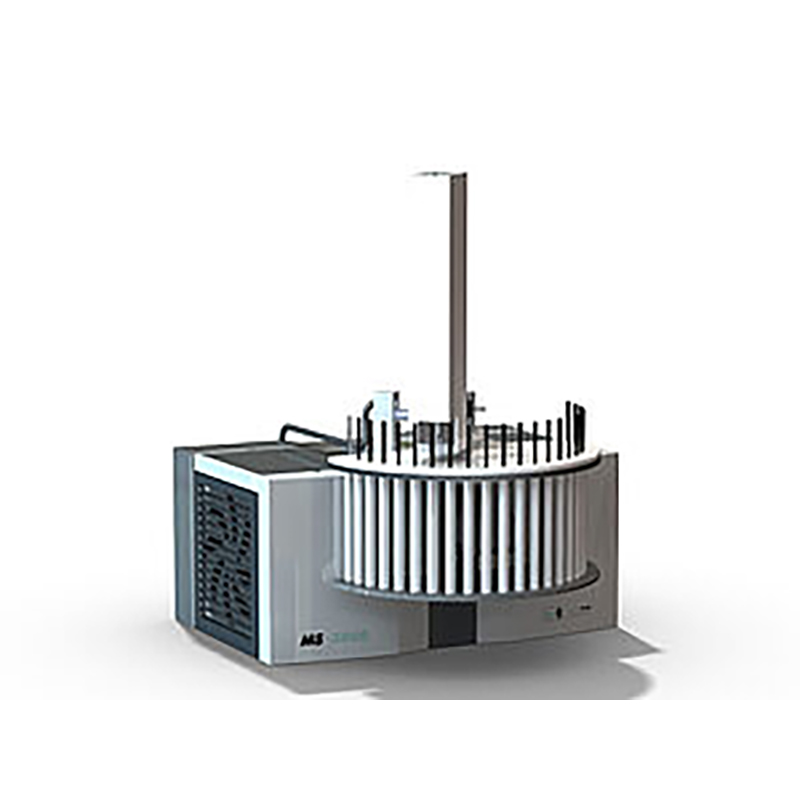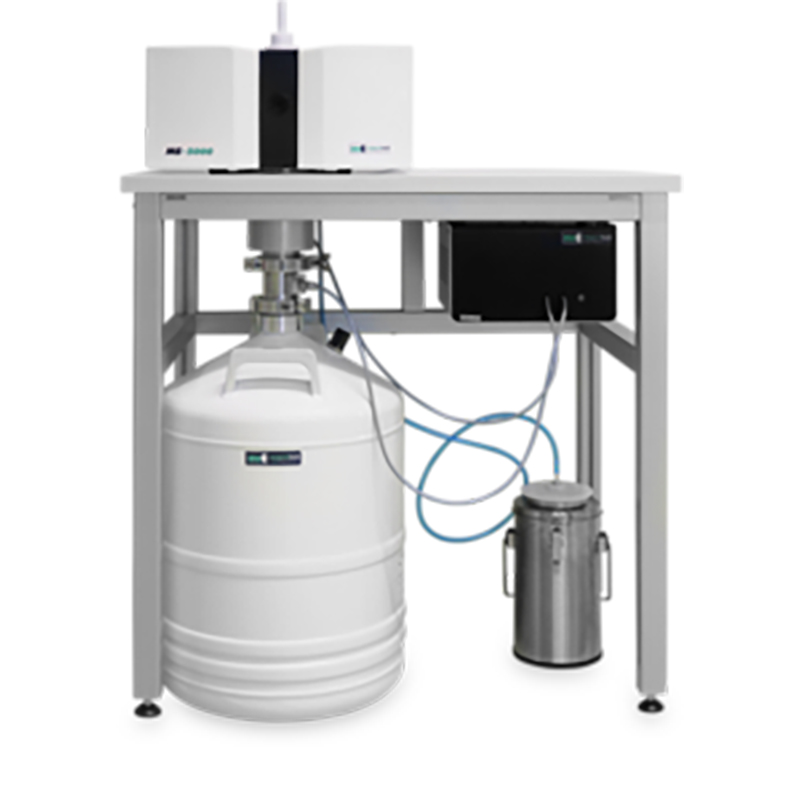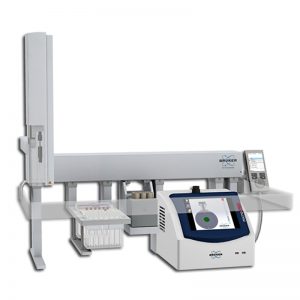Description
Reliable Performance
The Bruker Magnettech MSR5000 is designed for today’s laboratory requirements. It combines easy operation with X-band research grade sensitivity and affordability. The magnet provides a wide field range without cooling water requirement. The robustness of the instrument allows it to be used in the laboratory and factory floor.
Easy to Use
Customizable workspaces for data acquisition and data evaluation are standard in the Magnettech MSR5000 software. Learning the software and operating the instrument is so easy that even personnel with minimal training can work with Magnettech MSR5000 spectrometer.
State-of-the-art EPR Operation & Analysis Software
ESRStudio is a powerful and user friendly software for EPR measurements with some of the most modern and fluent workflow based user interfaces.
A new user can start the program, analyze, and interpret their results. More advanced users will find the necessary features and analysis tools to acquire and analyze data for their advanced scientific projects.
ESRStudio supports several file formats for import. The standard export is XML, that are structured ASCII files that can be used for processing using external applications. Import functions allow analysis of previously acquired measurements.
Key Features
- User friendly EPR/ESR operating software available
- User/application based customization
- Workflow for automated spectrum evaluation
- Automated lab report generation
- Remote access – access your EPR/ESR spectrometer from anywhere in the world via internet
Connectivity
The Magnettech MSR5000 ESR/EPR spectrometer is connected to a computer via Ethernet. This allows flexible installation and convenient measurement & control arrangement using short cables.
Encrypted remote access allows the user to monitor and control the measurement process from any computer within the network, and if desired, from anywhere in the world via. internet.
This remote access also allows Bruker to access the machine (with customer’s permission) to provide online training and remote technical support.
Accessories:
Autosamplers
Routine and repetitive measurements as well as everyday analytics in research labs and industrial quality control often require sample throughput that can be a tiring and error prone task for the user. This is enabled by a variety of autosampler configurations for liquids, solids and powders. Even mixing of components within the resonator is possible for following chemical reactions. Ask us for customized integration in your workflow.
Autosampler for Powder and Solid Samples
Automated handling of quarz tubes & precise height positioning within the resonator ensures for the highest reproducibility.
- 26 sample positions
- sample tubes: 165 mm long, 3 to 6 mm diameter
- option to combine with automated goniometer
Variable Temperature Controller
A variety of variable temperature options offer both low and high temperature studies for studies of transition metal complexes, unstable radical species, or thermal stability of samples.
Bio Temperature Controller
For keeping biological and biochemical samples constantly under conditions of elevated metabolic activity.
Temperature range: RT to 60° C
Temperature Controller incl. table
- PC controlled (control/registration software included)
- Optional: Software for automatic data acquisition for temperature measurements
Vessel for Providing Nitrogen Resonator Purge Gas
Vessel filled with liquid nitrogen. It evaporates and flushes the resonator, thus preventing condensating. Optional accessory in connection with fixed temperature dewar.
Goniometer
Goniometer is designed for angular dependent measurements and can be combined with the autosampler.
The Goniometer offers the study of anisotropic samples such as single crystals or thin films. The sample can be rotated between 0 and 360 degrees with a precision of 0.1 degree. Angles between 0° and 360° can be selected. The smallest step size is 0.1°.
Automated Goniometer
- Fully automated angular rotation of sample
- Step size 0.1 to 180 °
- Each measurement of a new spectrum starts with an automated tuning of the spectrometer for best measurement performance
Optical Irradiation
The optical irradiation accessory provides the ability to study photochemical radical reactions or photophysical production of excited paramagnetic states.
A variety of narrow or wide band excitation sources of different intensities or spectral compositions are available.
Optical Irradiation Unit
The Optical Stimulation Unit allows irradiation at specific definite wavelengths.
- Integrated light source for irradiating samples
- Holder for precise positioning included
- Direct operation through ESRStudio for fastest response times (a few microseconds)
- Suitable to trigger kinetic experiments
- High-power LED
- Intensity changeable from 100 % to 1 %
- Wavelength 365 nm
External Irradiation Unit
The External irradiation unit allows irradiation over of a continuous spectrum.
- Hg-Xe light source for irradiating samples
- Holder for precise positioning included
- Operation through ESRStudio, response times of several milliseconds
- High-power Hg-Xe lamp (up to 200 W)
- Intensity changeable 100 % to 1 %
- Available spectra: Ultraviolet (240 nm to 400 nm)
Glassware
Sample properties dictate the choice of the sample holder. A wide range of capillaries, sample tubes, flat cells, tissue cells, and finger dewars enable optimal measurement of a wide class of samples.
Choosing the best vessel for the sample
For the measurement of samples in the EPR/ESR Spectrometer one has the choice between the following sample vessels:
- Capillary
- Sample Tube
- Flat Cell
- Tissue Cell
- Fixed Temperature dewar
Capillaries
are standardized calibrated sample vessels. They are cheap, disposable one way items and allow easy sample exchange. Usually capillaries are used together with a matching guidance tube. For aqueous solutions the maximum volume of capillaries is 50 µl. For organic solvents with a lower dielectric constant, you can use capillaries with a higher volume or sample tubes.
Sample Tubes
are used for liquid and solid samples. We offer sample tubes of different diameters and lengths. The dielectric constant of the solvent of your liquid sample dictates the diameter of the sample tube. For example radicals in hydrocarbons can be measures using a 4 mm or 5 mm sample tube. For solid samples the moisture content of the sample restricts the diameter of the sample tube. For most purposes a length of 135 mm is used. For finger dewar measurements, a tube length of 240 mm is required. For samples that are difficult or impossible to tune you can either choose a sample tube with a smaller diameter or you can reduce the amount of sample inserted into the resonator.
Flat Cells
are used for liquid samples that are in polar solvents such as water, acids and alcohols. The ideal sample distribution in the resonator leads to a 2 – 2.5 fold higher intensity compared to 50 µl capillaries. The crucial point, when using a flat cell is the orientation of the flat section, the vertical position and the filled volume of the flat cell. Therefore we recommend using the special holder SH-P as a system to achieve consistent sample positioning.
Tissue Cells
can be used to measure skin sections, organ slices, pastes and emulsions. The same requirements have to be fulfilled that are valid for flat cells.
Special film holder
is offered for alanine dosimetry using thin film test strips. Furthermore we offer special tubes for alanine pellet dosimeters.
Fixed Temperature Liquid Nitrogen Dewars
are used to measure samples at 77K. You can either drop the sample into the liquid nitrogen and the frozen drops are collected in the finger for measurement. A further possibility is to freeze a cylinder of 4 mm diameter matching the size of the inner finger of the dewar. Solid samples can be measured using sample tubes of 3 or 4 mm outer diameter and 240 mm length.




